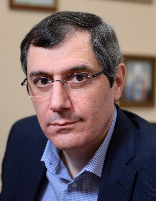Material Culture Lexicon in M.A.Castrén’s Dictionary (1844) and an Audio Dictionary of the Ižma Dialect (2012): Comparative Analysis on LingvoDoc
https://doi.org/10.15514/ISPRAS-2025-37(6)-13
Abstract
This article presents a comparative analysis of the material culture lexicon in the Izhma dialect of the Komi language, utilizing data from M.A. Castrén’s 1844 dictionary (revised 2022 edition) and a 2012 audio dictionary of the Beloyarsk village dialect processed and uploaded by E.V. Kashkin onto the LingvoDoc platform. The study aims to identify key trends in lexical dynamics by examining the interplay of indigenous vocabulary with borrowings, innovations, and archaisms over a period of more than 160 years. The Izhma dialect, shaped by intensive historical contacts with Russian and Nenets languages in a unique multi-ethnic environment, offers a significant case for understanding language vitality and shift. The research employed the LingvoDoc platform for processing and analyzing 127 lexemes from Castrén’s work and 167 from the modern audio dictionary. Lexemes were categorized into five thematic groups: dwelling, utensils and household items, clothing and footwear, tools and crafts, and transport. Each item was compared based on its presence in sources, phonological form, meaning, and etymology, identifying direct correspondences, archaization, innovation, lexical replacement, and phonetic-morphological changes. Results indicate distinct patterns across thematic groups. The "Tools and Crafts" category exhibited the highest proportion of archaisms (50%), reflecting the decline of traditional practices. Conversely, the "Transport" group showed the most significant innovation (73.9%), driven by new terminology and borrowings. The findings underscore that observed differences are not solely lexical transformations but also reflect varying recording completeness and focus between historical and modern sources. Overall, the Izhma dialect's material culture vocabulary reveals areas of both stability and active restructuring, providing valuable insights for reconstructing lexical subsystems, analyzing contact linguistics, and describing language evolution in peripheral Komi linguistic regions.
Keywords
About the Author
Olga Nikolayevna BAZHENOVARussian Federation
Cand. Sci. (Philology), researcher of the Laboratory of Linguistic Platforms, Ivannikov Institute for System Programming of the Russian Academy of Sciences. Her research interests include dialectology, comparative-historical linguistics; history of the Permic literary languages.
References
1. M. A. Sakharova, N. N. Selkov, “Izhma Dialect of the Komi Language”. Syktyvkar: Komi Branch of the USSR Academy of Sciences, Institute of Language, Literature and History, 1976.
2. M. Leinonen, “Russian influence on the Ižma Komi dialect”, International Journal of Bilingualism, vol. 13, no. 3, pp. 309–329, 2009.
3. V. Denisenko, T. Klyanova, “Problems of the Native Language among the Komi Rural Population”, Orientir: Socio-Political Journal of the Komi Republic, vol. 2, no. 1-2, pp. 48–50, 1994.
4. O. V. Kotov, M. B. Rogachev, Yu. P. Shabaev, “Modern Komi People”. Ekaterinburg: Ural Branch of the Russian Academy of Sciences, 1996.
5. A. S. Sidorov, “Influence of the Russian Language on the Grammatical Structure of the Komi Language”, In: G. V. Fedyuneva (Ed.), Selected Articles on the Komi Language. Syktyvkar, 1992, pp. 102–120.
6. N. M. Bichurina, “Mountains, Language and a Bit of Social Magic: An Experience in Critical Sociolinguistics”. Saint Petersburg: European University at St. Petersburg Publishing House, 2021.
7. Dictionary of the Izhma Dialect of the Komi Language Based on the Materials of M.A. Castrén (1843–1844), According to the Elementa grammatices Syrjaenae (1844), Ed. by Paula Kokkonen and Jack Rueter (Syrjaenica, 2022) Available at: https://lingvodoc.ispras.ru/dictionary/11470/1/perspective/11470/2/view (accessed: July 3, 2025).
8. Dictionary of the Izhma dialect of the Komi-Zyrian language, Beloyarsk village dialect of Priuralsky District, Yamal-Nenets Autonomous Okrug, Ed. by E. V. Kashkin, 2012. Available at: https://lingvodoc.ispras.ru/dictionary/1389/6/perspective/1389/7/view (accessed: July 3, 2025).
9. M. A. Castrén, “Elementa grammatices Syrjaenae”. Saint Petersburg, 1844.
10. J. Janhunen, “Manuscripta Castreniana: A General Preface to the Series”, Manuscripta Castreniana. Finno-Ugrian Society, 2017.
11. N. Partanen, M. Hämäläinen, J. Rueter, K. Alnajjar, “Processing M.A. Castrén's Materials: Multilingual Typed and Handwritten Manuscripts”, 2021. Available at: https://arxiv.org/abs/2112.14153 (accessed: July 4, 2025).
12. M. A. Castrén, “Elementa grammatices Syrjaenae. Critical edition with introduction, translation and commentary”, Ed. by Paula Kokkonen, Jack Rueter. Helsinki: Finno-Ugrian Society, 2022. 278 p. (Manuscripta Castreniana; Vol. VI).
13. Yu. V. Normanskaja, O. D. Borisenko, I. B. Beloborodova, A. I. Avetisyan, “The Software System LingvoDoc and the Possibilities It Offers for Documentation and Analysis of Ob-Ugric Languages”, Doklady Mathematics, vol. 105, no. 3, pp. 187–206, 2022.
14. B. Munkácsi, B. Kálmán, “Wogulisches Wörterbuch”. Budapest: Akadémiai Kiadó, 1986.
15. V. I. Lytkin, E. S. Gulyaev, “Brief Etymological Dictionary of the Komi Language”. Syktyvkar: Komi Book Publishing House, 1999. 430 p.
Review
For citations:
BAZHENOVA O.N. Material Culture Lexicon in M.A.Castrén’s Dictionary (1844) and an Audio Dictionary of the Ižma Dialect (2012): Comparative Analysis on LingvoDoc. Proceedings of the Institute for System Programming of the RAS (Proceedings of ISP RAS). 2025;37(6):203-218. https://doi.org/10.15514/ISPRAS-2025-37(6)-13














